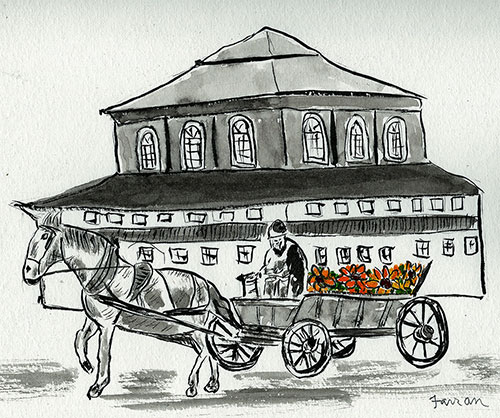Lost Treasures: The Wooden Synagogues of Eastern Europe The Artwork of Bill Farran
Horokhiv, Ukraine - Sumi-e Style Brush Painting
Horokhiv, Ukraine - Sumi-e Style Brush Painting
Yiddish: Horochov
Horokhiv was first mentioned in 1450 when King Kazimierz Jagielonczyk granted Count Olizarov-Szylowicz the fief of Horokhiv as a reward for his services to the crown. Jews first settled in Horokhiv in the 16th Century. Their large wooden Great Synagogue was a high building, covered with a tin roof, and crowned by a dome.
In 1791 Count Stanislav Poniatowski acquired Horokhiv and developed the growth of trade by introducing weekly market days important to Jewish commerce. Between the end of World War I until the Holocaust, Jews numbered about five thousand people of the town’s eight thousand. In the years 1933-4, the Polish government took measures designed to force Jews from their favorable economic position. When a large Polish department store opened in Horokhiv, it struck a severe blow to the livelihood of many Jews.
On June 26, 1942, the town was seized by German forces, followed by the murder of about three hundred Jews in the municipal park. In September, a ghetto was established with a population of about five thousand people, including two thousand deportees from surrounding areas. On September 8, 1942, the ghetto was liquidated as the Jews were driven out of town and shot at pits previously prepared by German forces. All Jewish life in Horokhiv ended with the Holocaust.
Purchase a print
Sumi-e Style Brush Prints are 8x10 inches, in an 11x14 matte.
